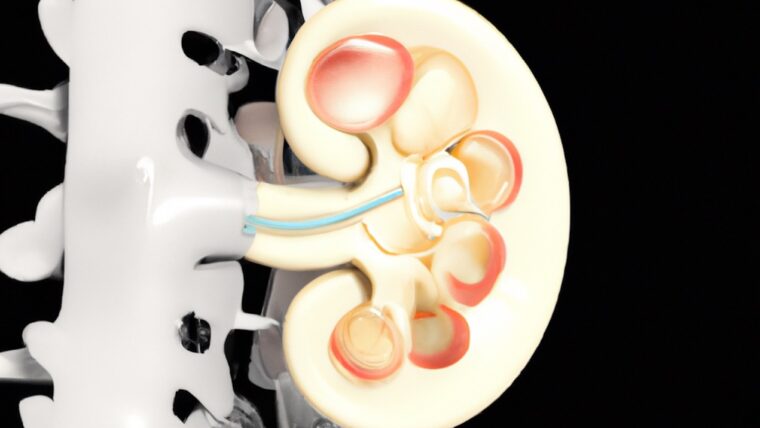In this article, we will explore the four types of kidney stone surgery and provide you with the information you need to make an informed decision about which one may be the best option for you.
Kidney stones are a common medical condition that affects millions of people around the world. They can be extremely painful and uncomfortable, and if left untreated, they can lead to more severe health complications. While medication and lifestyle changes can help prevent the formation of kidney stones, sometimes surgery is necessary to remove them.
Types of Kidney Stone Surgery
- Extracorporeal Shock Wave Lithotripsy (ESWL)
Extracorporeal Shock Wave Lithotripsy (ESWL) is a non-invasive treatment for kidney stones and certain types of gallstones. It was introduced in the early 1980s and has since become a common treatment for these conditions.
In ESWL, high-energy shock waves are passed through the body to break the stones into smaller pieces. These pieces can then pass naturally from the body through the urinary tract. Here’s how the procedure works:
- The patient may be given a sedative or light anesthesia to help them relax and minimize discomfort.
- The patient is positioned on a water-filled cushion. Using X-rays or ultrasound, the doctor locates the stone.
- The lithotripsy device, known as a lithotripter, sends high-energy shock waves through the body. These shock waves can break the stones into tiny pieces about the size of grains of sand.
- After the procedure, the patient passes the stone fragments over the following days or weeks through their urine.
Here are some advantages of ESWL:
- Non-invasive: ESWL does not require any incisions or internal telescopic devices.
- Outpatient Procedure: Most ESWL procedures are performed on an outpatient basis, allowing the patient to go home the same day.
- Good Success Rate: ESWL has a good success rate, particularly with small to medium-sized stones (less than 20 mm in diameter).
Like any medical procedure, ESWL carries some risks. It may not be effective for very large stones, and sometimes more than one treatment is necessary. Some patients experience pain as they pass the stone fragments, and in rare cases, the shock waves can cause damage to the kidneys or other nearby organs. There can also be a risk of infection, bleeding, or blockage of the urinary tract by stone fragments.
Always consult with your healthcare provider to understand the best treatment option based on your specific health condition and circumstances.
- Percutaneous Nephrolithotomy (PCNL)
- The patient is placed under general anesthesia. The procedure is typically performed with the patient in the prone (face-down) position.
- The surgeon uses imaging guidance, typically fluoroscopy, to locate the kidney stone.
- A needle is inserted through the skin of the back and into the kidney where the stone is located.
- A wire is passed through the needle and into the kidney.
- The needle is removed, and a series of progressively larger dilators are passed over the wire to create a tract from the skin to the kidney.
- A nephroscope (a type of endoscope designed for the kidney) is passed through this tract.
- The surgeon uses the nephroscope to locate and remove the stone. Larger stones may need to be broken up with a laser or another type of device before they can be removed.
Here are some advantages of PCNL:
- Effective for Large Stones: PCNL is generally considered the best treatment for large kidney stones (typically larger than 2cm).
- Minimally Invasive: Although it requires a small incision in the skin, PCNL is less invasive than open surgery and typically involves a shorter recovery time.
- High Success Rate: PCNL typically has a high success rate for removing kidney stones completely, especially when performed by experienced surgeons.
As with any kidney surgical procedure, PCNL also carries risks, including infection, bleeding, injury to the kidney, and the possibility of needing further procedures if not all of the stone material can be removed in one session. After the procedure, there might be some pain and blood in the urine for a few days.
As always, the decision on whether to proceed with PCNL should be made in consultation with a healthcare provider, taking into account the specifics of the patient’s condition, the size and location of the kidney stones, and other individual factors.
- Ureteroscopy
Ureteroscopy is a common procedure used in the diagnosis and treatment of conditions affecting the urinary tract, such as kidney stones or ureteral stones.
The procedure involves the use of a thin, flexible instrument called a ureteroscope, which is inserted into the urethra (the tube through which urine exits the body), passed through the bladder, and then into the ureter or kidney as needed. The ureteroscope is equipped with a light and camera, allowing the urologist to visualize the inside of these structures.
When used to treat kidney or ureteral stones, a ureteroscopy may involve the use of a laser or other device to break the stones into smaller pieces that can pass naturally from the body. If a stone is small enough, it may be removed whole with a special basket-like tool.
Here are some advantages of ureteroscopy:
- Minimally invasive: The procedure does not involve any incisions, as the ureteroscope is passed through natural body openings.
- Outpatient procedure: Most ureteroscopies can be performed on an outpatient basis, meaning patients can usually go home the same day.
- Effective for certain stones: Ureteroscopy can be particularly effective for stones located in the lower part of the urinary tract.
As with any procedure, ureteroscopy can have potential complications, including infection, bleeding, and ureteral injury. There’s also a risk that the procedure may not be able to remove the stones entirely, especially if they are large or numerous, and further treatment may be necessary.
Patients are typically under general or spinal anesthesia during a ureteroscopy, so they do not feel pain during the procedure. After the procedure, there may be some discomfort and blood in the urine as the body heals and any remaining stone fragments pass.
As always, patients should discuss with their healthcare provider to understand the risks and benefits in their specific situation.
- Open Kidney Stone Surgery
Open kidney stone surgery, also known as open renal surgery or nephrolithotomy, is typically considered a last resort when other less invasive treatments are ineffective or not suitable. Nowadays, minimally invasive techniques such as extracorporeal shock wave lithotripsy (ESWL), percutaneous nephrolithotomy (PCNL), and ureteroscopy are the most common treatments for kidney stones.
In open kidney stone surgery, the surgeon makes a large incision in the patient’s back or abdomen to directly access the kidney or ureter to remove the stone.
Here are some scenarios where open kidney stone surgery may be considered:
- Large Stones: Large kidney stones that are too big to pass naturally or be effectively treated with ESWL or ureteroscopy may require open kidney stone surgery.
- Complex or Multiple Stones: If a patient has multiple stones or stones in hard-to-reach locations, open kidney stone surgery may be the most effective treatment option.
- Infection or Complications: If a stone is causing severe infection, blockage, or other complications, open kidney stone surgery may be necessary.
- Anatomical Abnormalities: If the patient has a structural abnormality in their kidney or ureter, open surgery might be the best option.
The risks of open kidney stone surgery are generally higher than with minimally invasive procedures due to the large incision. These risks can include infection, bleeding, damage to surrounding organs, and a longer recovery period. After open kidney stone surgery, hospital stays can last several days and full recovery can take up to six weeks.
As always, the specific treatment for kidney stones will depend on a variety of factors, including the size and location of the stones, the patient’s overall health, and the judgement of the treating physician.
FAQs
How do I know which type of kidney stone surgery is right for me?
Is kidney stone surgery painful?
Can kidney stones be prevented?
Conclusion
Kidney stone surgery can be a necessary and effective treatment option for those who suffer from kidney stones. By understanding the different types of kidney stone surgery and working with your doctor to determine the best course of treatment for you, you can alleviate the pain and discomfort caused by kidney stones and improve your overall health and wellbeing. Remember, prevention is key, so take steps to reduce your risk of developing kidney stones by making healthy lifestyle




